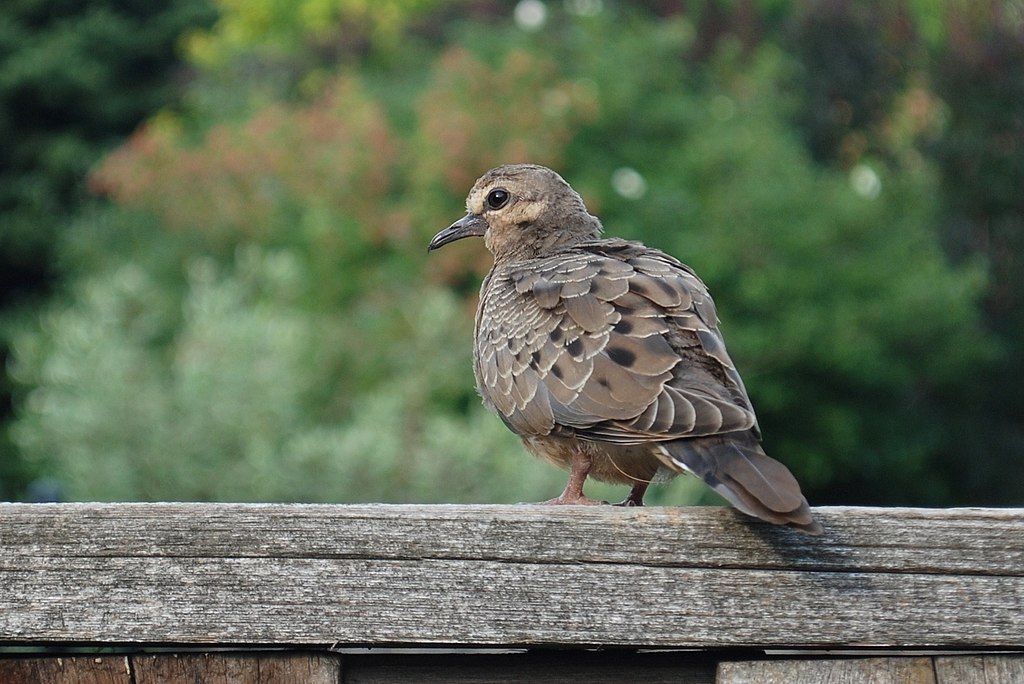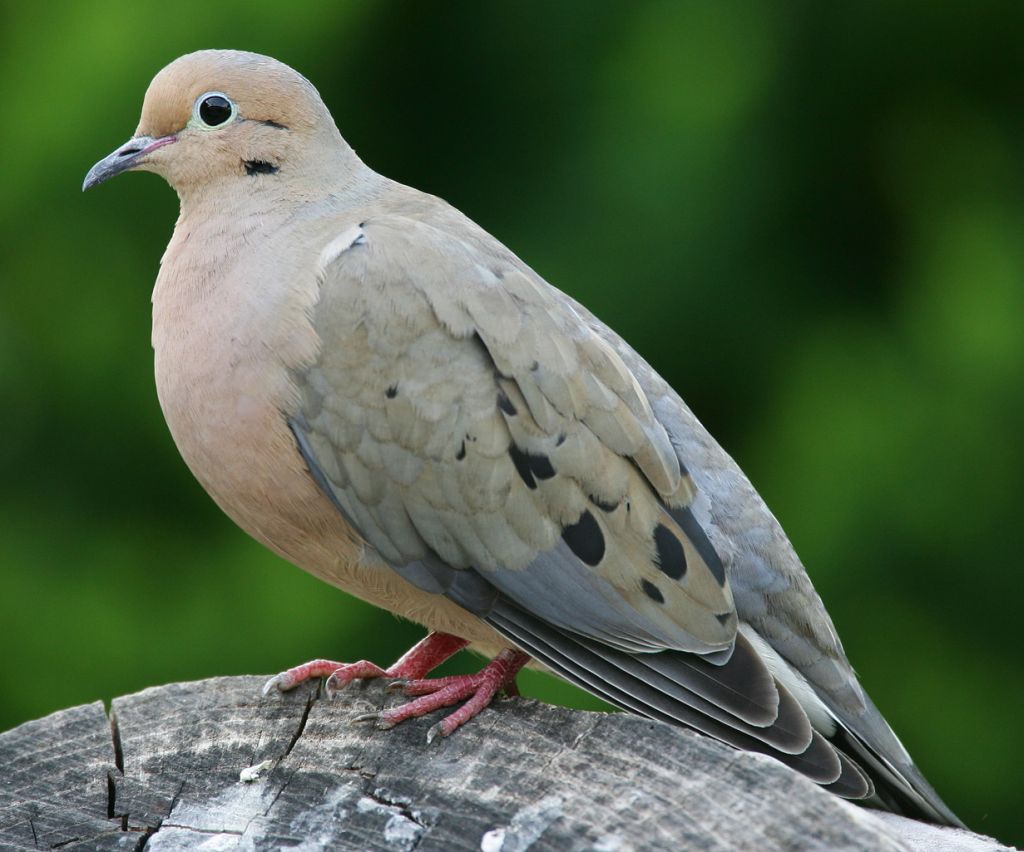
15 August 2023
Last Sunday while Bob Donnan was at the Pirates’ game, two young birds nestled in the windshield wiper well of his car.
Yesterday [13 August] when our Chevy Bolt was parked at the South Hills Village – Public Rapid Transit garage, two young [Mourning] Doves nestled into the lower windshield area. We didn’t even notice them until exiting the garage into brighter light!
The car is so quiet that their short ride didn’t alarm them. After I stopped the car and waited for all traffic to pass, I waved my hand toward them and they flew off, back toward the parking garage.
— email from Bob Donnan, 14 August 2023
I could tell by the birds’ appearance that they are juvenile mourning doves because they look spotty rather than smooth. Juvenile body feathers are so new that each one has a pale tip, giving the bird a scalloped look. Compare the top photo of a juvenile with this one of an adult.

Why did the two birds hang out together?
Mourning doves (Zenaida macroura) nest multiple times per season and at each nesting the female lays two eggs that hatch in 14 days and fledge 12-15 days later. Just before they fledge the father completely takes over feeding duty so his mate can cycle and lay a new clutch.
The siblings are dependent on their father for 12-15 days after they fledge (26-30 days old). During this period they stay together in the same area during the day, never straying far, waiting for dad to show up. In the nest they learned to associate his voice with a feeding so if he calls they come.
Interestingly they have good homing skills even at this young age. If juveniles are forced from their “reference area” before they are 21 days old — i.e. while still dependent on their father — they always return within 24 hours.
Why at the parking garage?
Mourning doves nest in trees, shrubs and even on the ground but they have no problem nesting near humans and, according to Birds of the World, “may use unusual human-made substrates for nest sites, e.g. rain spouts, mops hanging on walls, immobile car accessories.”
Hmmm. “Immobile car accessories.” These two are probably not the only baby doves who’ve been taken for a ride.
(photos from Wikimedia Commons, video by Bob Donnan)
Baby doves are so…clueless?…that you can, if quick enough, walk up and catch them by hand when they are roosting someplace within reach. I used to try when I was a kid, but I was never quick enough. Always so close, though!
I became Foster Mom to a rehabilitating Dove when the woman who had a home full of rehabilitating animals was seriously injured in a car accident a number of years ago. A local Vet & his wife were desperate to find Foster homes for all her recovering animals. The Dove had been seriously injured by a cat.
So Dovey moved into my Den that had lots of bright light and a TV. I bought him a much bigger cage and he had the company of my children to watch when they weren’t in school.
But Dovey was silent!! So my younger son would coo at him each day after school hoping for a reply. Nothing.
Then one morning in early Spring I was awakened by Cooing!! I woke my husband up and we both listened to that sweet sound. From then on Dovey cooed throughout the day & evening.
Dovey lived with us about 2 years until the Rehabilitator had finally recovered and the animals were returned to her care. His injuries prevented him from being released.
Doves line up on my deck railing many evenings and coo as the evening ends. It is a sound I love.